Hospital Design Process-Initial Stages-Brief Overview
Following is a brief description of the initial stages of the hospital design process.
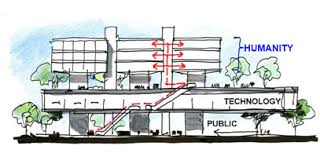
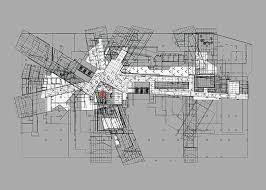
• Facility Mix
IThe facility mix is a list of the various components of the proposed hospital and is derived from the Detailed Project Report. It will give the number and types of inpatient rooms and wards, thrust areas for the proposed hospital i.e. the departments or modalities that will form the cutting edge of the various services the hospital will offer, and a list of other departments and support services necessary.
This facility list forms the input for the functional and space program, discussed next.
• Functional & Space Programs
Once you have agreement on a capital investment strategy and a facility mix (derived from the detailed project report), it is time to undertake programming.. It serves as a common policy document which outlines the parameters and vision of the project for all the members of the planning and design team. It should also contain all the necessary information for the architectural design team to commence conceptual and schematic design.
The method in which the functional and space programs are produced is very important to the healthcare facility design process. This is because in larger projects the initial capital costs very often exceed the long term operational of the facility in four to five years in India and in two to three years in the West. Quality thought being given to the initial planning will go a long way towards decreasing long term operational costs. The components of the functional and space program for each department of the proposed healthcare facility could read as follows:
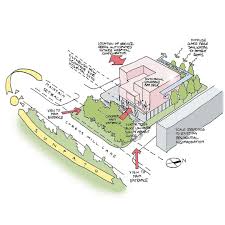
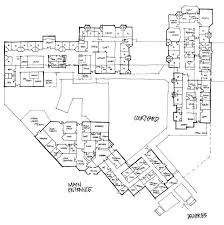
Listing of planning assumptions:
• An assessment of the situation on the ground (as existing)
• The planning objectives and a vision for the future
• Existing and proposed workloads
• Proposed time of operation
• Existing and proposed staffing
• Operational and support systems assumptions
• Equipment list for the proposed department
• Functional adjacencies and access requirements of the various departments
The space program consists of a list of the various spaces in the department in square feet and meters.
The space program provides a list of all rooms or areas required for each function and the total area required for the function.
The above approach flows from the functional requirements. We initiate a dialogue with the client representatives / stakeholders on what eventually becomes the functional program. This document defines the functional requirements of the project in keeping with the facility & services mix brief provided by the clients. These functional requirements are defined in terms of the following parameters:
• The services accommodated,
• The potential workload, &
• The key operational premises.
• Stack Plan
A “stack” plan as the name suggests is not an architectural plan but an Excel spreadsheet which has the departments from your space program listed on the Y axis and the floors as in basement, ground, first etc. listed on the X axis. The idea is to distribute the areas of the departments on the various floors to get a handle on how much area each floor template is holding, and which departments too.
The designer may be tempted to hold all this information in his/her head, as they are usually notoriously shy of paperwork and in a rush, as I have mentioned before, to start the design process. A word of caution here, healthcare facility design are always much more complex than design of other building types that you might come across, and these documents will help you steer your way through the time-consuming and thus expensive pitfalls that you will face. By using an Excel spreadsheet it is easy and quick to examine various alternatives and fine tune the area distribution
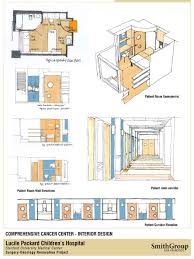
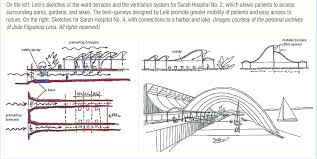
• Factors for Site Selection – Shape and Attributes
Among the four factors impacting site selection, location, size, shape and orientation, for a proposed healthcare facility the most important is location.. Proximity to transportation hubs, good access roads, visibility, the location of competitor’s hospitals with regard to the proposed facility all contribute to the suitability of the site.
The size of the piece of land is linked to its price and also to the Floor Space Index (FSI) of the site. This, taken along with the various statutory requirements of the piece of land determines how much built-up area the site will sustain.
We come to the third attribute, the shape of the site. This is usually a matter of common sense. As a thumb rule, we have found that given the area as a constant, for the smaller sites, a ratio of 1:1.5 between the two sides of a rectangle (approximately) works best. Usually you will find there is only one access road on the short side of the site. If it is on the long side you are luckier. I there are roads on two or more sides of the site you are even luckier and it has access roads on all four sides you are indeed blessed. Small sites with odd, jagged shapes are obviously unsuitable, large sites are a pleasure to work with, despite a few zigs and zags.
By orientation of a site I mean the orientation of the building(s) it will permit. In the smaller urban sites we have been discussing before, it is unlikely you will have any choice in the matter. As large parts of these hospitals are likely to be artificially lit and ventilated, the orientation is important as to the heat gain from sunlight. Techniques exist to calculate and minimize this with various building features and materials. On larger semi-urban and rural sites the opportunity exists to orient the buildings to make most use of natural light and ventilation. A lot of reading and reference material is available on this subject in this age of green architecture.
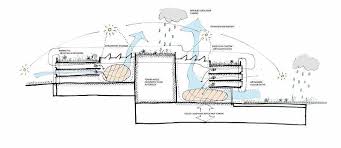
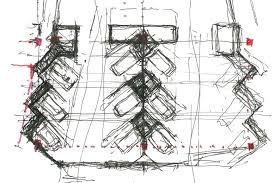
• Zoning
On a site that has multiple usages by which I mean buildings housing differing kinds of functions it is useful at the onset of design to block out appropriate areas that each usage will occupy. This is done by considering the following factors:
• The functional and spatial relationships between the various buildings/usages.
• The topography of the site.
• The vehicular and pedestrian circulation connections between the buildings.
• Any special site features such as trees, existing buildings, water bodies, HT lines etc.
• Orientation of the buildings with respect to sunlight and prevailing winds.
The above is a brief introduction to the Hospital Design Process. The design of the hospital building follows from this, and is too complex a process to get into in this note. Suffice it to say that these initial design factors will affect the building design to a considerable degree.
———————————————————————————————————————
Hussain Varawalla – Healthcare Architect
Deep Healing Music for Headache, Stress, Anxiety & Pain
The Beautiful Hospital | William Schlein | TEDxGreenville
0 thoughts on “Hospital Design Process-Initial Stages-Brief Overview”